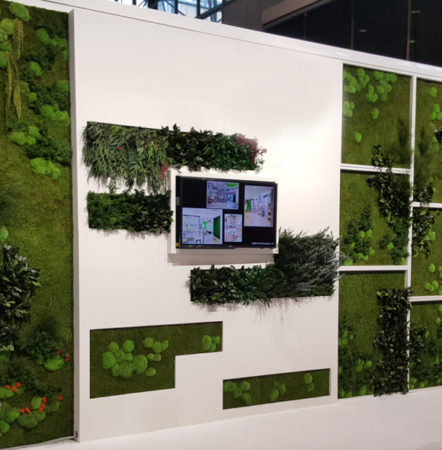The innate human connection to nature and all living things is known as Biophilia. As humans, regardless of age or culture, we have a biological need for contact with the force of peace and tranquility in the natural world. This is not a new idea, but one that resonates deeply in society today. The healing and comforting power of nature no longer belongs only to the out-of-doors. Today’s designers are bringing the “outdoors in.”
“Study nature, love nature, stay close to nature…it will never fail you.”
-Frank Lloyd Wright

Biophilia in design has been proven to increase productivity, wellness, and general community welfare – particularly in the workplace, healthcare, hospitality, and retail markets. A wide range of custom-designed garden installations are available for interior spaces, using all-natural, preserved plants. These gardens are long-lasting and essentially maintenance free. And ecological as they don’t require water or irrigation, specific light, pruning, or periodic maintenance.
“…the emerging concept of biophilic design recognizes how much human physical and mental well-being relies on the quality of our relationships to the natural world.” -Doug Moss & Roddy Scheer for Earthtalk.org
Bringing the “outdoors in,” is not a new trend, but one that should be presented as an opportunity for incorporating nature into an interiors project.
Further Reading:
How Biophilic Design Can Boost Productivity in Hospitality Meeting Spaces
What is Biophilia, and Why You Need Biophilic Design in Your Home
What is Biophilic Design in Architecture?
Post Updated February 19, 2020

